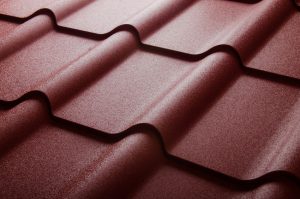What Are The Most Hail Resistant Types of Roofing Materials?

Hail is among most harmful weather phenomena that your roof might be required to stand up to. With hail storms becoming increasingly frequent even in regions where the phenomenon used to be only very rarely encountered, more and more homeowners in the country are looking for hail-resistant roofing solutions. While there is no such thing as completely hail proof roofing (even the strongest material can be at least chipped by exceptionally large hail), leaving your roof in need of roof repair Minneapolis contractors provide, certain materials can stand up to the large balls of ice, the heavy rain and the high winds associated with hail storms better than others – here they are.
Impact-Resistant Shingles
These shingle varieties are somewhat thicker and much stronger than standard, 3-tab or architectural shingles. These special shingles come with Class 4 impact resistance rating, which means that they have undergone extensive testing that involved dropping steel balls of various sizes, from various heights to simulate the conditions that the material will have to endure in a real hail storm. In terms of appearance, impact resistant shingles are available in a range that is just as wide as the choice of standard shingles, but the enhanced resistance to impact comes for a price, so expect impact-resistant shingles to be pricier than standard shingle products.
Clay Tiles
This traditional roofing material has been around for hundreds of years. In the past, clay tiles were typical mostly in Mediterranean areas, but the strength, the durability and the attractive appearance of clay has made the material popular all over the world.
When it comes to hail resistance, clay tiles make an excellent choice. The thick, heavy tiles can stand up to almost any weather, even to high winds and large hail stones and even if one or two of your clay tiles might get damaged in the next hail storm, tile roofs are made up from many, smaller, individual components, which makes repair through replacement quick and easy. Clay tiles are resistant not only to hail, but also to other weather-related challenges, including wide temperature variations, harsh sunshine, wind, snow, rain and they are also non-corrosive, resistant to fires and pests.
Slate
Another traditional and extremely durable roofing material, slate is the preferred choice of homeowners who can afford a more expensive roof and who own buildings that are solid enough to hold up a very heavy roof. Your slate roof will be hardly moved by the weather – the natural stone can stand up not only to hail, but to wind, rain, snow, harsh sunshine, it is impervious to pest attacks, to algae infestations as well as to fire.
When it comes to the installation of slate roofs, you must be aware that the special material requires special expertise. While most other roofing materials can be installed by amateur roofers, slate roofs need professional installation, special tools and special techniques – an aspect that further increases the related costs. However, slate stands out not only because of its durability, but also because of its longevity – you can expect your slate roof to stay on your building for 100+ years.
